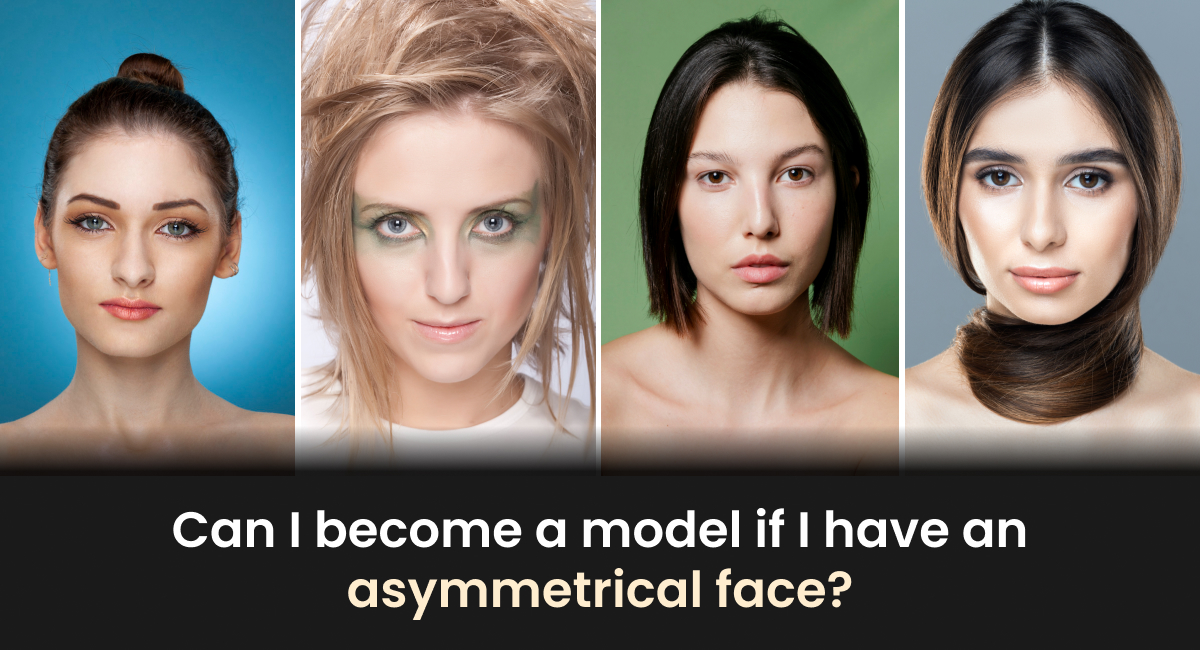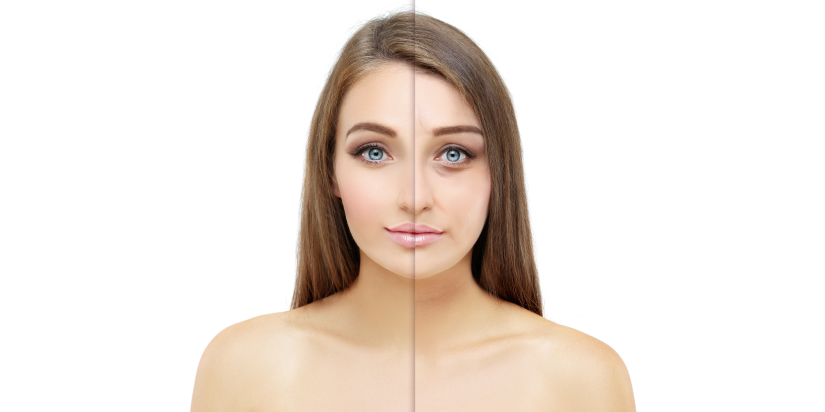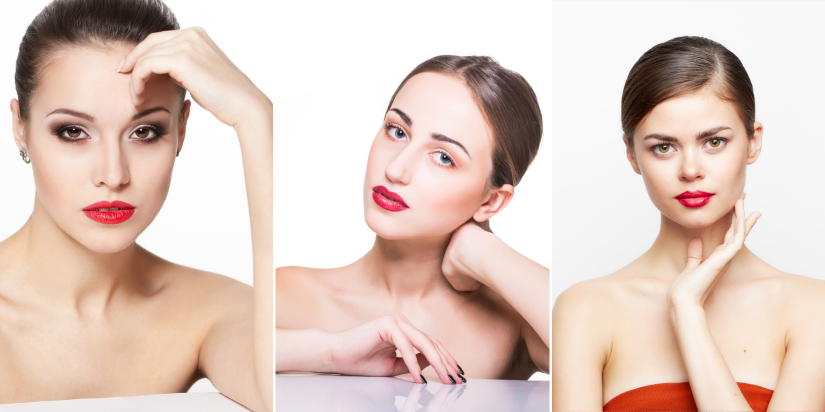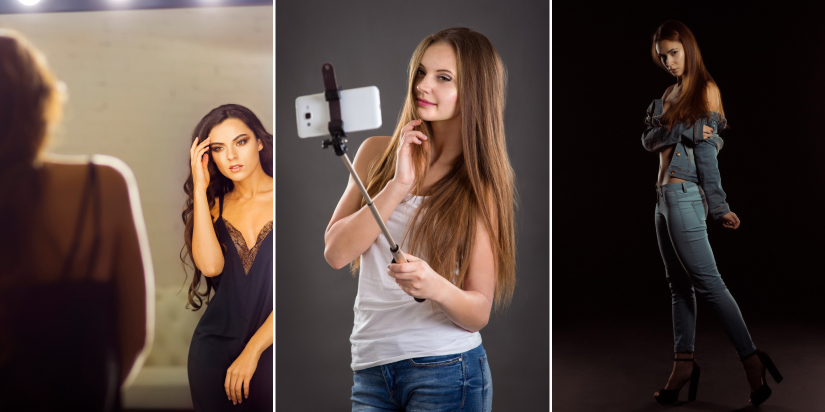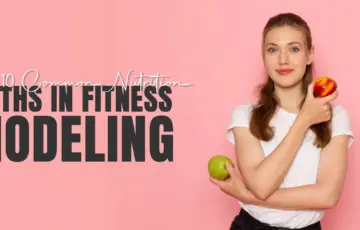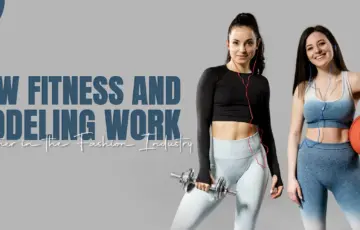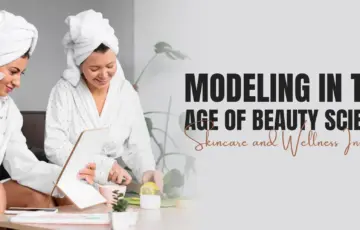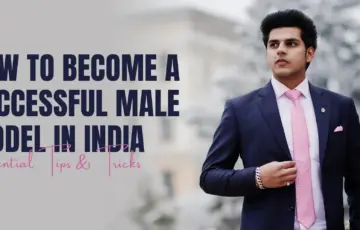For decades, aspiring models have been told that the path to success is paved with flawless skin, a specific set of measurements, and above all, a perfectly symmetrical face. This ideal has been plastered across magazine covers and billboards, creating a narrow and often unattainable definition of beauty. If you’ve ever stared into the mirror, critically analyzing every angle and line, you might have wondered: “Can I become a model if my face isn’t perfectly balanced?”
Let’s clear the air: The answer is a resounding yes. The world of fashion is undergoing a beautiful revolution. The rigid, cookie-cutter beauty standards of the past are crumbling, creating a new era that celebrates individuality, character, and authenticity. Today, what makes you different is what makes you desirable. Once seen as a flaw, an asymmetrical face is now recognized for what it truly is: a mark of uniqueness and a powerful asset.
This guide is for every aspiring talent who has ever questioned their potential due to perceived facial imperfections. We’ll explore why the modeling industry is not just accepting, but actively seeking out models with distinct looks. It’s time to stop chasing an illusion and start your journey toward becoming a model by celebrating the very features that make you, you.
What is Facial Asymmetry and Why is Everyone Talking About It?
Defining Asymmetry: Beyond the Buzzword
In the simplest terms, facial asymmetry means that the two sides of your face are not exact mirror images of each other. One eyebrow might be slightly higher, one side of your smile might lift more, or your jawline could have a subtly different curve. Here’s the secret: this is entirely normal. Achieving perfect symmetry is virtually impossible outside of a digitally manipulated image. Every single person on the planet has some degree of facial asymmetry.
The myth of perfection is so pervasive that we often fail to see the beauty in reality. Famous faces we consider to be the epitome of beauty are, upon closer inspection, asymmetrical. This subtle imbalance is part of what gives a face character and makes it human and relatable. The idea that you need a geometrically perfect face to succeed is an outdated concept that the modern fashion industry is eagerly moving past.
The Myth of ‘Perfection’ in the Fashion Industry
Historically, the industry has chased a particular ideal. However, this ideal has never been static. It has shifted with cultural trends, artistic movements, and societal values. The current shift is one of the most exciting yet. Brands and designers are realizing that consumers no longer connect with unattainable ideals. They want to see themselves reflected in the media they consume.
This has created a robust demand for authenticity. The focus has moved from finding a “perfect” face to a memorable one. A face that tells a story, evokes an emotion, and stands out in a sea of sameness is now the ultimate goal. This is where modeling with facial asymmetry becomes not just a possibility, but a distinct advantage. It’s a powerful visual signature in a world saturated with fleeting images.
The Rise of the Unique Look: Why Asymmetry is an Asset
Character and Memorability
Think about the most iconic models in history. Often, it wasn’t their “perfection” that made them famous, but a distinct feature—a gap in their teeth, striking eyes, or a firm, unconventional bone structure. These are the unique features that make a face unforgettable. Asymmetry contributes to this memorability. It creates visual interest and complexity, drawing the viewer’s eye and making them look twice.
When a casting director flips through hundreds of photos, a face with character is fresh air. It breaks the monotony and promises a look that is dynamic and versatile. You are no longer just another pretty face; you are a unique look model, and in many ways, the quintessential asymmetrical face model—someone who brings a specific and valuable quality to the table. This distinction is crucial for building a lasting career.
Authenticity Sells: The Shift Towards Relatability
Today’s consumers are savvy. They can spot heavy-handed retouching from a mile away and are increasingly drawn to brands that celebrate real beauty. This quest for authenticity means that commercial modeling and even high fashion are looking for genuine and relatable models.
An asymmetrical face is inherently authentic. It’s real. It hasn’t been smoothed into an unrecognizably generic version of itself. This realness builds a connection with the audience. When a consumer sees a model with a look that feels attainable and real, it builds trust and makes the product being advertised seem more accessible. The industry is realizing that the power to embrace imperfections is not just an empowering personal philosophy, but a smart business strategy.
Types of Modeling Where an Asymmetrical Face Can Thrive
Something like this:
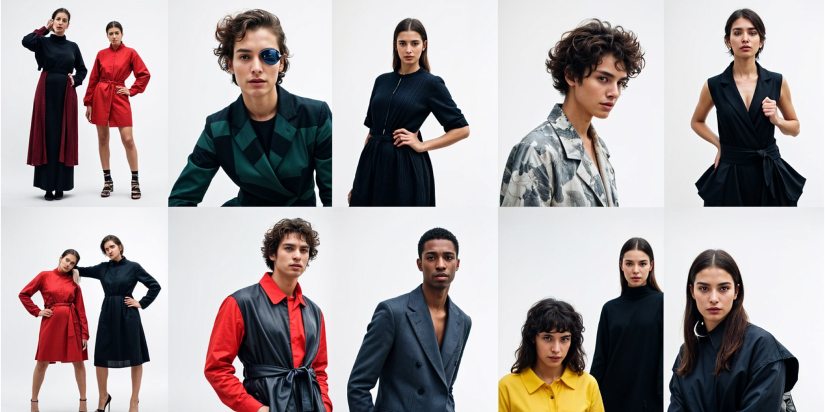
High Fashion and Editorial
High fashion has always been the realm of the avant-garde. It’s about art, expression, and pushing boundaries. Conventional beauty is often secondary to a strong, striking, and unforgettable look. Designers and photographers in this space frequently prefer faces with sharp angles, prominent features, and a unique structure. An asymmetrical face can provide the artistic edge they seek, making you a perfect candidate for editorial spreads in top magazines and walking for cutting-edge designers.
Character Modeling
This is a rapidly growing niche where an asymmetrical face is a huge advantage. Character modeling focuses on finding faces that can tell a story or fit a specific persona for an advertising campaign, television show, or film. The goal isn’t to be conventionally beautiful but expressive and memorable. Whether a brand needs a “quirky best friend,” an “innovative tech CEO,” or a “gritty artist,” a face with character and distinction is essential. Your facial asymmetry adds to that character, making you a strong contender for these fascinating and often lucrative jobs.
Commercial and Print Modeling
Don’t assume that commercial modeling is off-limits. This is the sector that is changing the most rapidly. Brands selling everything from skincare to smartphones want to connect with a broad audience. This has led to a massive push for diversity and inclusivity in print modeling and advertising. A friendly, trustworthy, and memorable face is highly sought after. Your unique look can help a brand stand out and connect with consumers more personally.
What About Runway?
Can you be a runway model? Absolutely. While the runway has traditionally had strict height and measurement requirements, the rules for facial features have become much more flexible. Designers are increasingly using models with a wide range of looks to make their shows more interesting and to represent their brand’s ethos better. If you meet the physical requirements for runway work, having a unique and asymmetrical face can be the very thing that gets you noticed during a casting.
Your Action Plan: A Step-by-Step Guide to Becoming a Model
Step 1: Build Unshakable Confidence
This is the most critical step. Before convincing an agency or a client to believe in your look, you must believe in it yourself. The industry can be harsh, and rejection is part of the process. Your confidence will be your shield and your greatest asset.
Start by reframing how you see your face. Stop using words like “flaw” or “imperfection.” These are your unique markers. They are part of your personal brand. Practice positive self-talk. Follow models and public figures who celebrate their unique looks. The more you normalize and embrace imperfections, your inner confidence will grow. This is the foundation upon which you will build your career. The journey to build trust is ongoing, but it starts now.
Step 2: Create a Killer Modeling Portfolio
Your modeling portfolio is your resume. It’s the first impression you’ll make on model agencies and clients. It must be professional, versatile, and, most importantly, authentically showcase you. Invest in a professional photographer who understands how to work with light and angles to capture you at your best, without trying to hide or “correct” your asymmetry.
Your portfolio should include a range of shots. Crucially, you need strong headshots—clear, close-up photos of your face. Don’t shy away from direct, front-facing shots. A confident headshot that showcases your unique facial structure is powerful. Also include three-quarter profiles and full-body shots to show your physique and how you carry yourself. The goal is to show versatility while highlighting the unique quality of your look.
Step 3: Understand Your Angles and Expressions
Spend time in front of a mirror or your phone camera. Get to know your face intimately. Which side do you prefer? What expressions feel most natural? How does the light hit your bone structure? This isn’t about finding a “good side” to hide behind; it’s about understanding your instrument.
Knowing your angles allows you to collaborate effectively with photographers during shoots. You can suggest poses and expressions that you know work, making you a proactive and professional model to work with. This knowledge gives you control over your image and helps you consistently produce stunning photos.
Step 4: Research and Target the Right Model Agencies
Blasting your portfolio to every agency you can find is ineffective. You need to be targeted. Research model agencies with a reputation for representing diverse talent. Look at their boards. Do they have other models with unconventional or unique looks? Agencies often have different divisions (e.g., commercial, fashion, character). Identify which division your look is best suited for.
Platforms like Dazzlerr can be an invaluable resource, connecting aspiring models directly with legitimate agencies and casting opportunities. These platforms help streamline the discovery process, ensuring your portfolio gets in front of the right people who are actively looking for fresh talent.
Step 5: Prepare for Casting Calls
When you get invited to casting calls, be prepared. This means arriving on time, with your portfolio (physical or digital) ready, and looking professional. Typically, you should arrive with a clean face (or minimal, natural makeup as requested) and simple, form-fitting clothing (like a black t-shirt and jeans).
The most important thing to bring is your confidence. Walk in with good posture, make eye contact, and be polite and engaging. Casting directors are not just looking at your face but assessing your personality and professionalism. They want to know if you will be a pleasure on set. Let your personality shine through.
Nurturing Your Career in the Evolving Modeling Industry
Professionalism is Non-Negotiable
Your reputation is everything. Always be punctual, prepared, and positive on set. Treat everyone, from the photographer to the assistants, with respect. A model who is easy and enjoyable to work with will get booked repeatedly. Reliability and a good attitude are just as important as your look.
Building Your Personal Brand
In today’s digital age, a model’s brand extends beyond their portfolio. Use social media as a tool to showcase your personality, your interests, and your unique journey. It allows clients and followers to connect with you on a deeper level. A strong personal brand can open doors to ambassadorships, collaborations, and other opportunities beyond traditional modeling jobs.
Conclusion: Your Asymmetrical Face is Your Superpower
Let’s return to the original question: Can you become a model with an asymmetrical face? Not only can you, but your asymmetrical face might be the key to your success. The modeling industry is no longer searching for the illusion of perfect symmetry. It is searching for character, authenticity, and faces that tell a story.
Your journey as an aspiring asymmetrical face model is one of confidence and self-acceptance. Your unique features are not a limitation; they are your signature, your superpower. Now go out and show the world what you’ve got.
